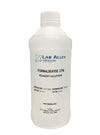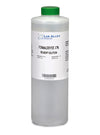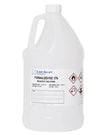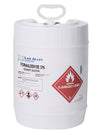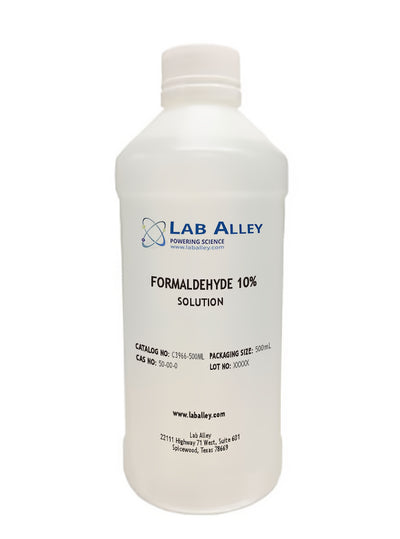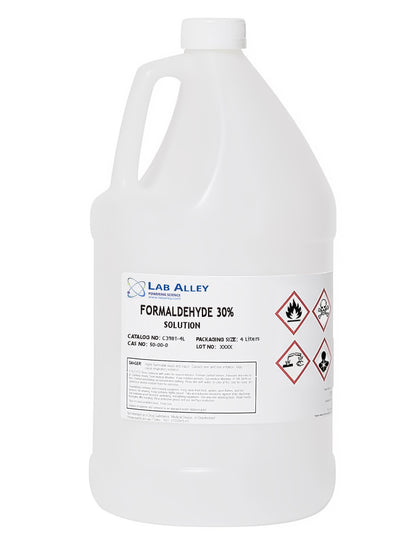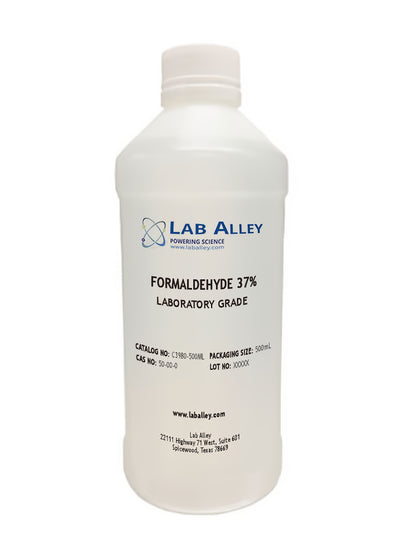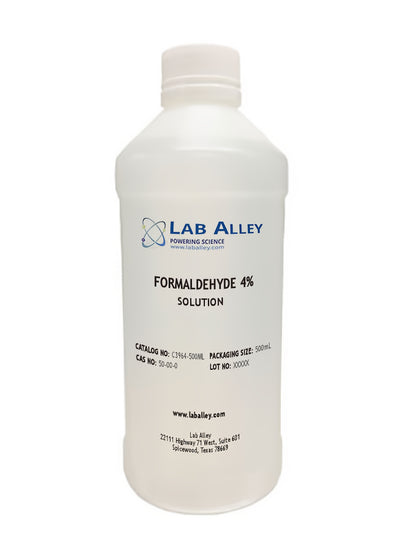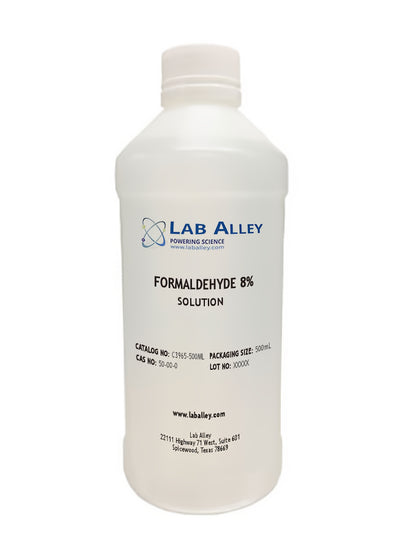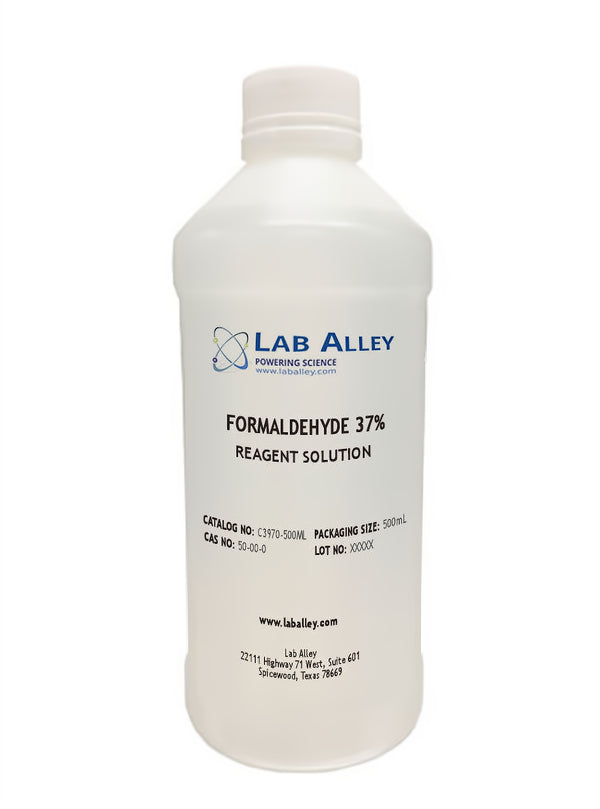
Business Support
Formaldehyde 37% Reagent Grade
For questions regarding lead time, please contact a member of our Customer Care Team at customercare@laballey.com
Business Support
Description
About Formaldehyde 37% Reagent Grade
Formaldehyde Is A Naturally Occurring Organic Compound. Formaldehyde is a colorless, flammable, strong-smelling chemical that is used in building materials and to produce many household products. Formaldehyde can cause irritation of the skin, eyes, nose, and throat. High levels of exposure may cause some types of cancers. Formaldehyde is a simple chemical compound made of hydrogen, oxygen and carbon. All life forms – bacteria, plants, fish, animals and humans – naturally produce formaldehyde as part of cell metabolism. Formaldehyde is perhaps best known for its preservative and anti-bacterial properties, but formaldehyde-based chemistry is used to make a wide range of value-added products. Formaldehyde is one of the most well-studied and well-understood compounds in commerce.
COMMON USES AND APPLICATIONS
- Disinfectant
- Preservation of biological specimen
- Disinfectant To Kill Bacteria, Parasites and Fungi
- Identify Alkaloids
- Drug Testing
- Photography
- Resin Production
INDUSTRIES
Customer Reviews and Q&A
Safety and Shipping
DOT: Formaldehyde, solution, 8, UN2209, III, PG III; 5-gallon ships hazmat.
Please contact us to request a Safety Data Sheet (SDS) and Certificate of Analysis (COA) for Formaldehyde Solution 37%.
Business Support
Built for Business.
At Lab Alley, we simplify procurement with custom quotes, credit applications, tax exemptions, and fulfillment support, ensuring on-budget, on-time delivery - your success is our priority.
Apply for Credit
A Lab Alley credit account streamlines purchasing for your business. Our Customer Success Team is available to help you through every step of the process.
Request a Custom Quote
Get a fast, customized quote tailored to your specific needs. Our team ensures accurate pricing and availability to help streamline your purchasing process.

Additional Business Resources
Lab Alley provides access to essential certifications, documents, and other resources to support your business.
Certificates of Analysis

Create a Lab Alley Account

RECEIVE exclusive offers, promotions, and discounts on chemicals.

Always have the product you need, when you need it with our AUTOSHIP program.

